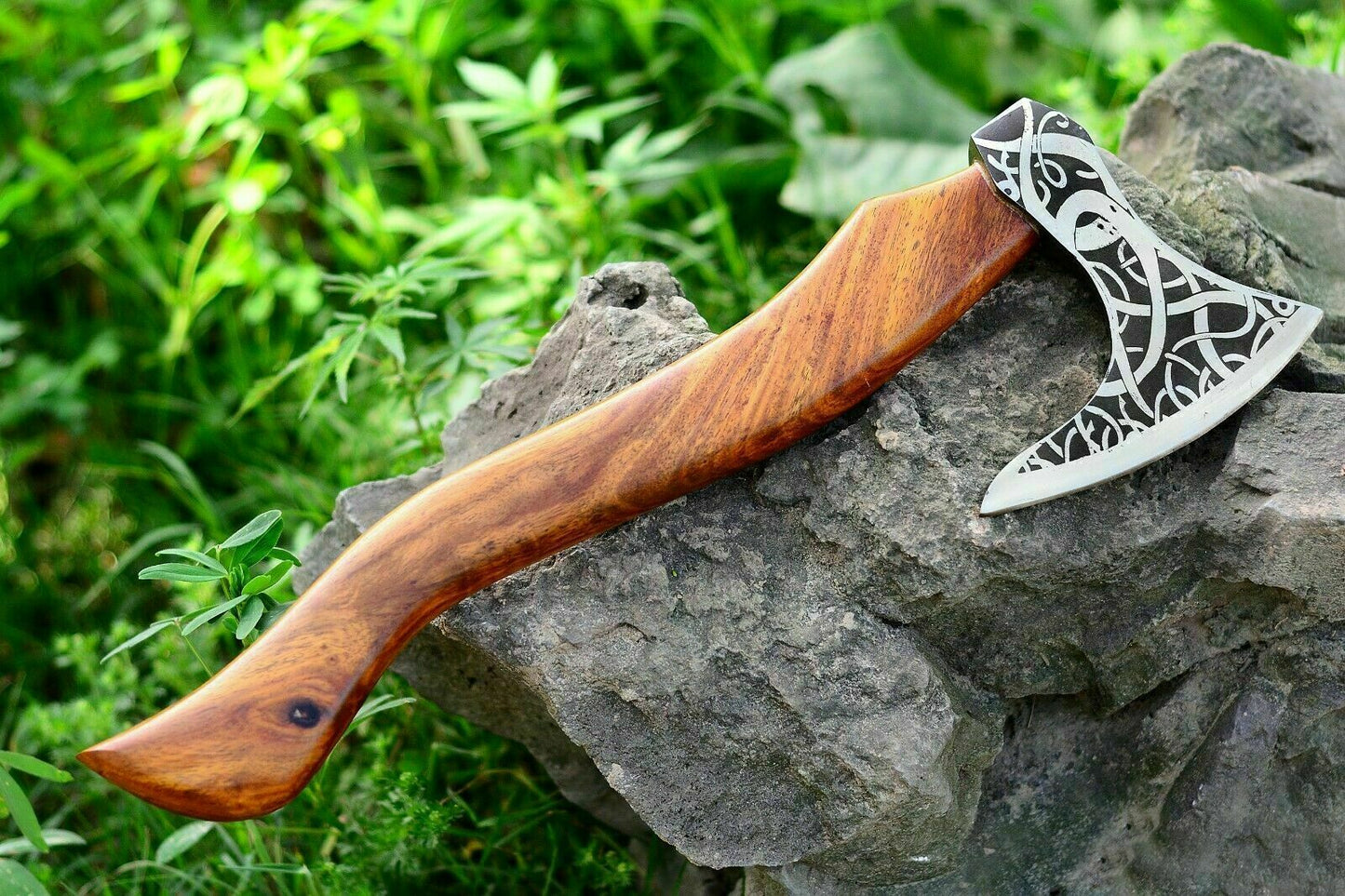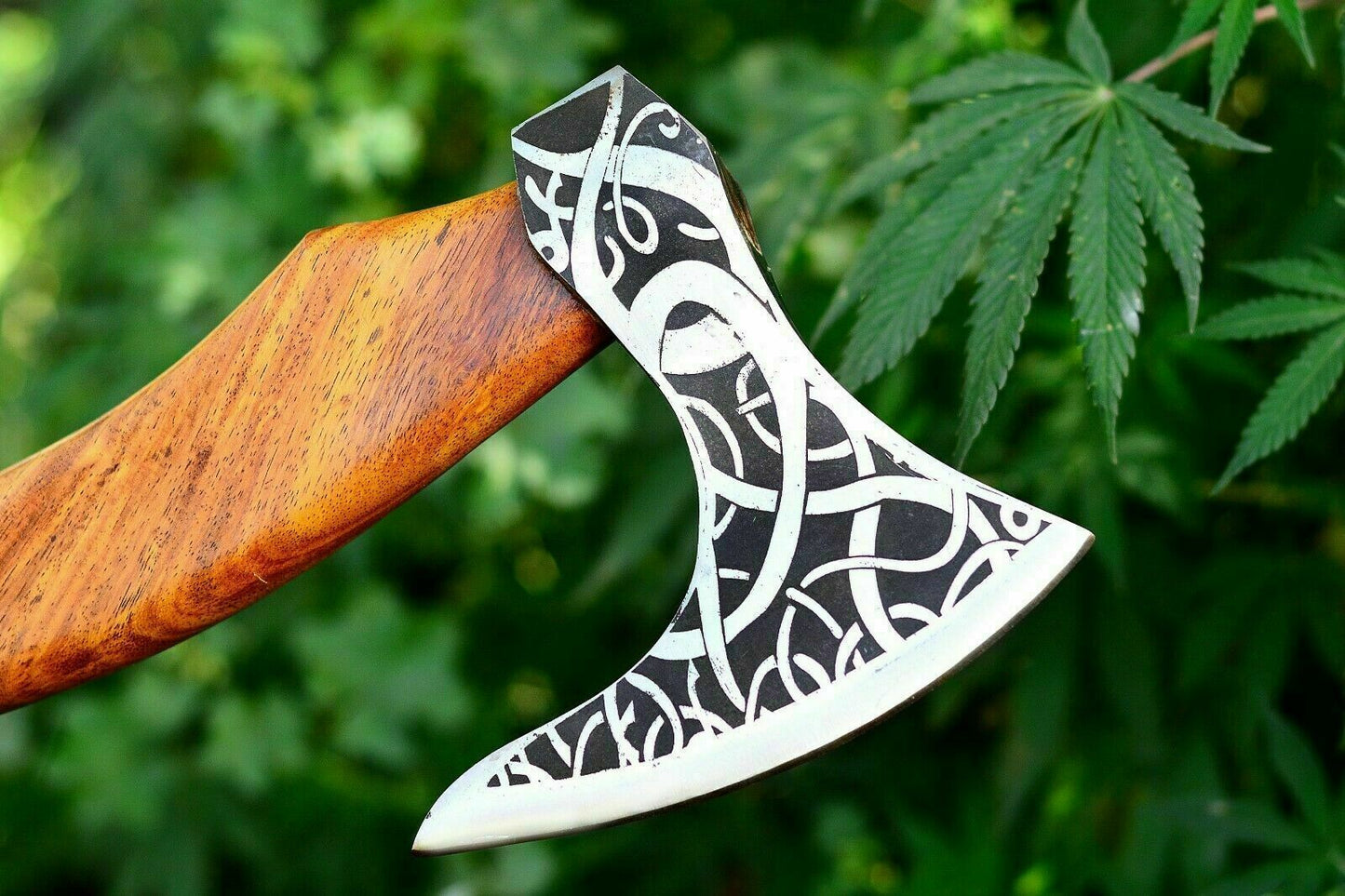WW Production
Viking Axe Bearded Axe Tomahawk Birthday Gifts-Viking Axe Real, Bearded Axe Real Hatchet Russian Rosewood Working Tool with Premium Leather Sheath
Viking Axe Bearded Axe Tomahawk Birthday Gifts-Viking Axe Real, Bearded Axe Real Hatchet Russian Rosewood Working Tool with Premium Leather Sheath
Couldn't load pickup availability
The Viking axe was one of the most iconic and versatile weapons of the Viking Age (8th–11th centuries). It was used both as a tool and as a deadly weapon in battle, favored by Norse warriors for its effectiveness, balance, and adaptability. Viking axes came in various shapes and sizes, each designed for different functions, from cutting wood to slashing through enemy armor.
Design and Structure
The Viking axe typically featured a broad, single-edged blade attached to a long wooden haft. Unlike double-edged battle axes found in later medieval periods, Viking axes were single-bladed with a variety of cutting-edge shapes, ranging from straight to curved. The blade was usually made of iron or high-quality steel, often with a sharp, honed edge to maximize cutting power. The back of the axe head was often flat or slightly rounded, while some axes had decorative engravings or intricate inlays of silver or bronze, signifying their owner’s wealth or status.
Material:
Blade Material: 1095 High Carbon Steel
Handle Material: Ashwood
Specification:
Overall Length: 16.5 inches
Handle Length: 16 inches
Blade Length: 5.6 inches
Blade Width: 5.5 inches
Package Includes:
1x Viking Axe
1x Leather Sheath
The haft (handle) of the Viking axe was usually made from hardwood, such as ash, oak, or hickory, ensuring durability and resistance to splitting. The length of the haft varied depending on the type of axe. Shorter axes, often called hand axes, measured around 60 cm (24 inches) and were ideal for one-handed use, often paired with a shield. Longer axes, such as the Dane axe, had handles reaching up to 150 cm (59 inches), allowing warriors to wield them with both hands for greater reach and force.Symbolism and Legacy
Beyond battle, Viking axes held significant symbolic and cultural value. They were often associated with Norse mythology, particularly linked to Thor’s hammer, Mjölnir, and were sometimes buried alongside their owners as a sign of honor. In modern times, the Viking axe remains a symbol of Norse heritage, craftsmanship, and warrior spirit.
Share







